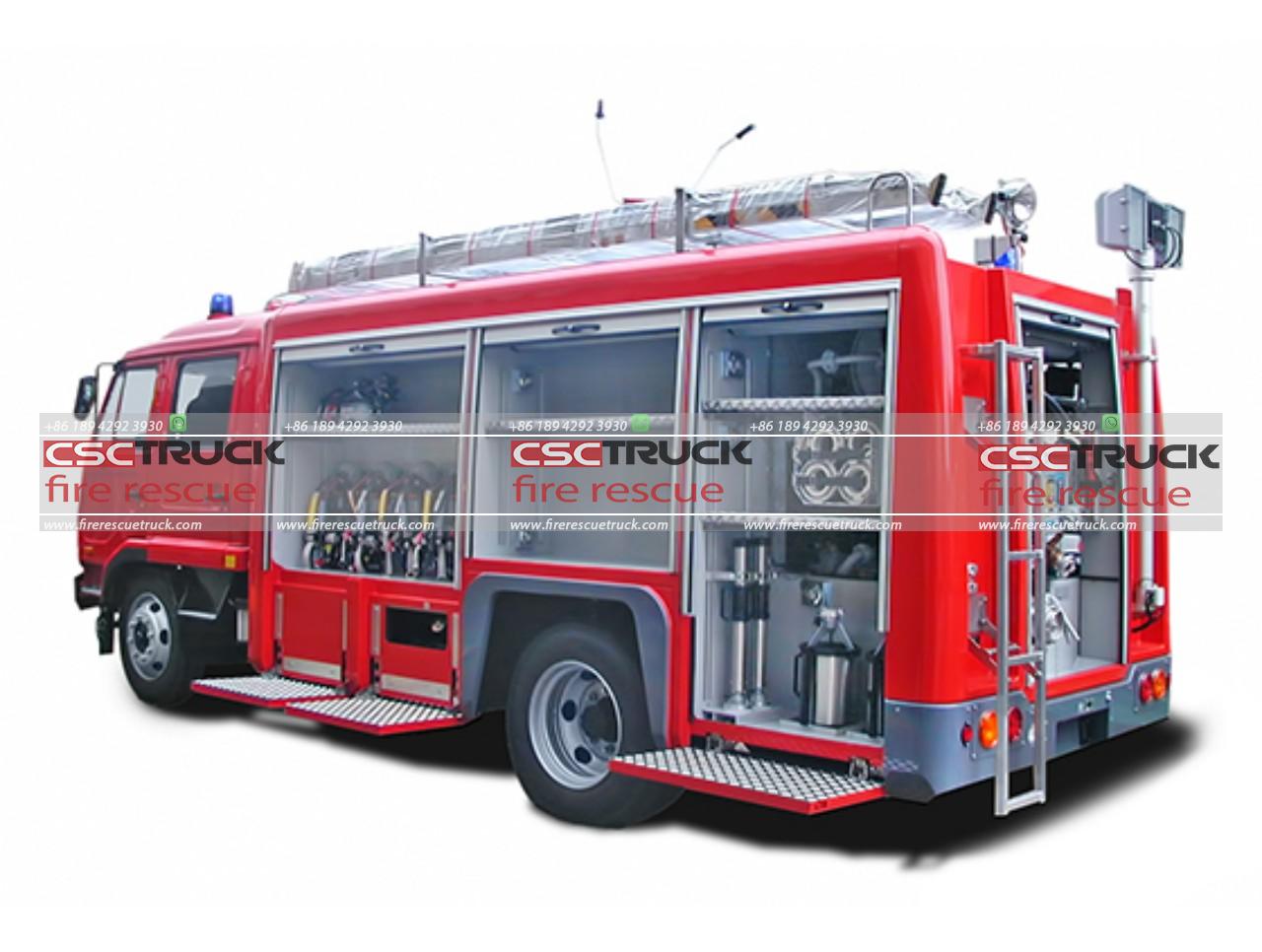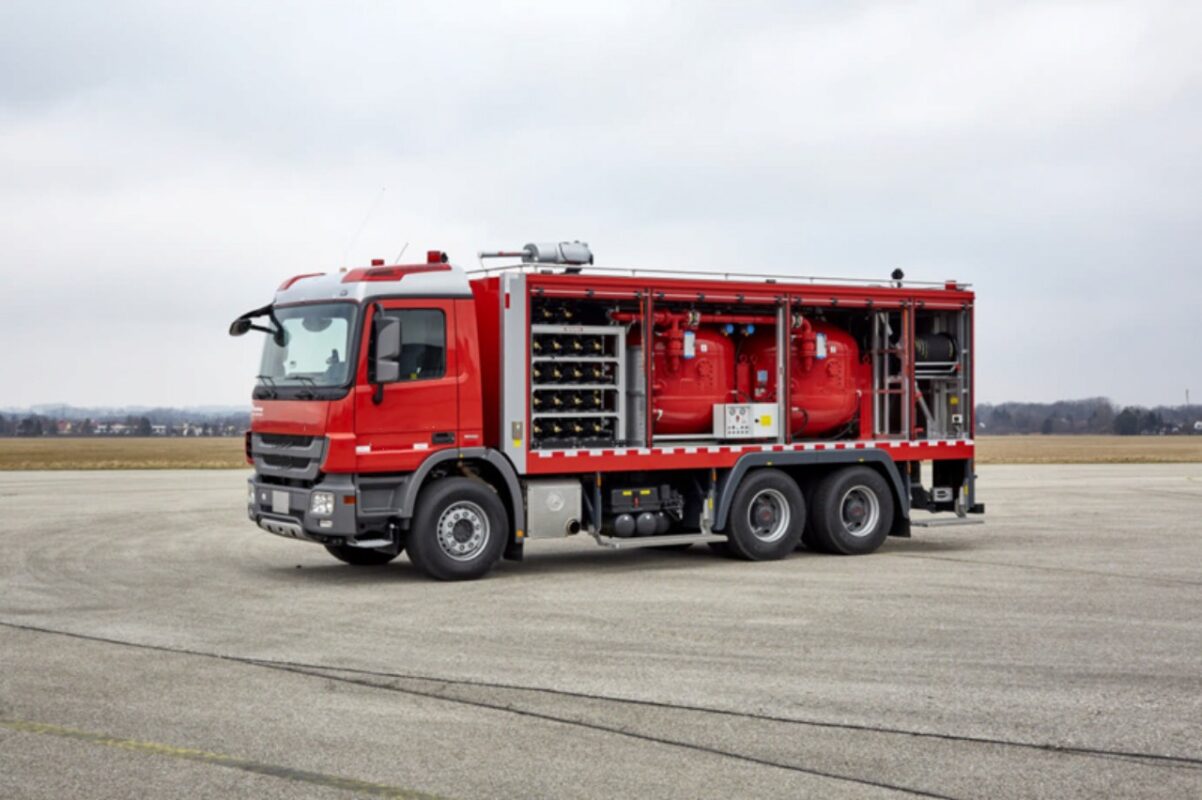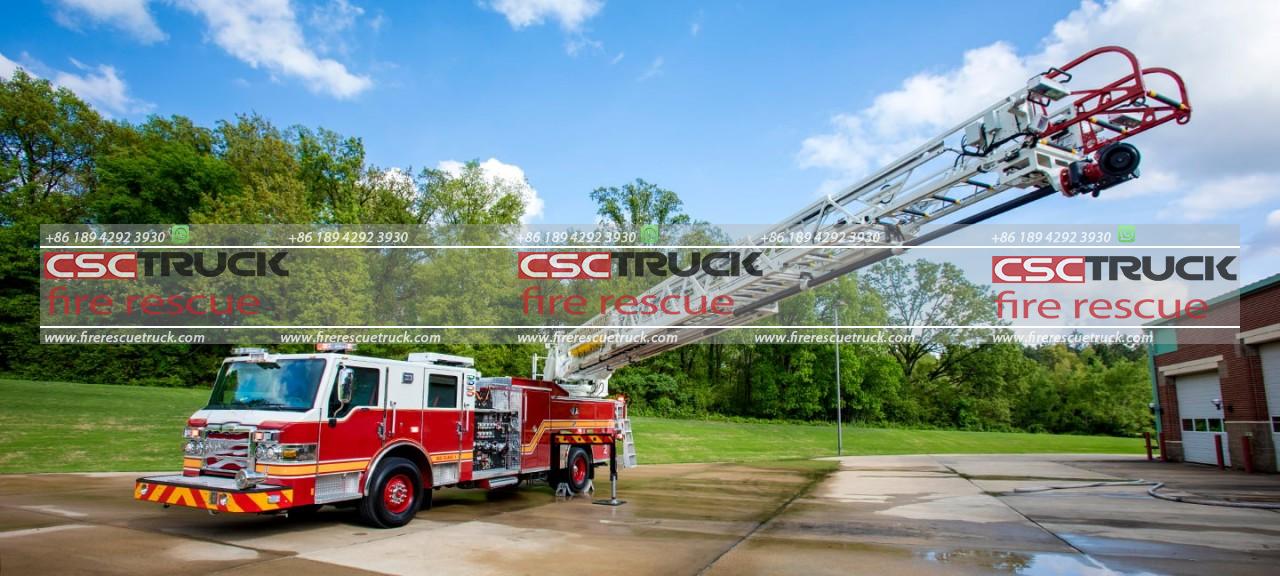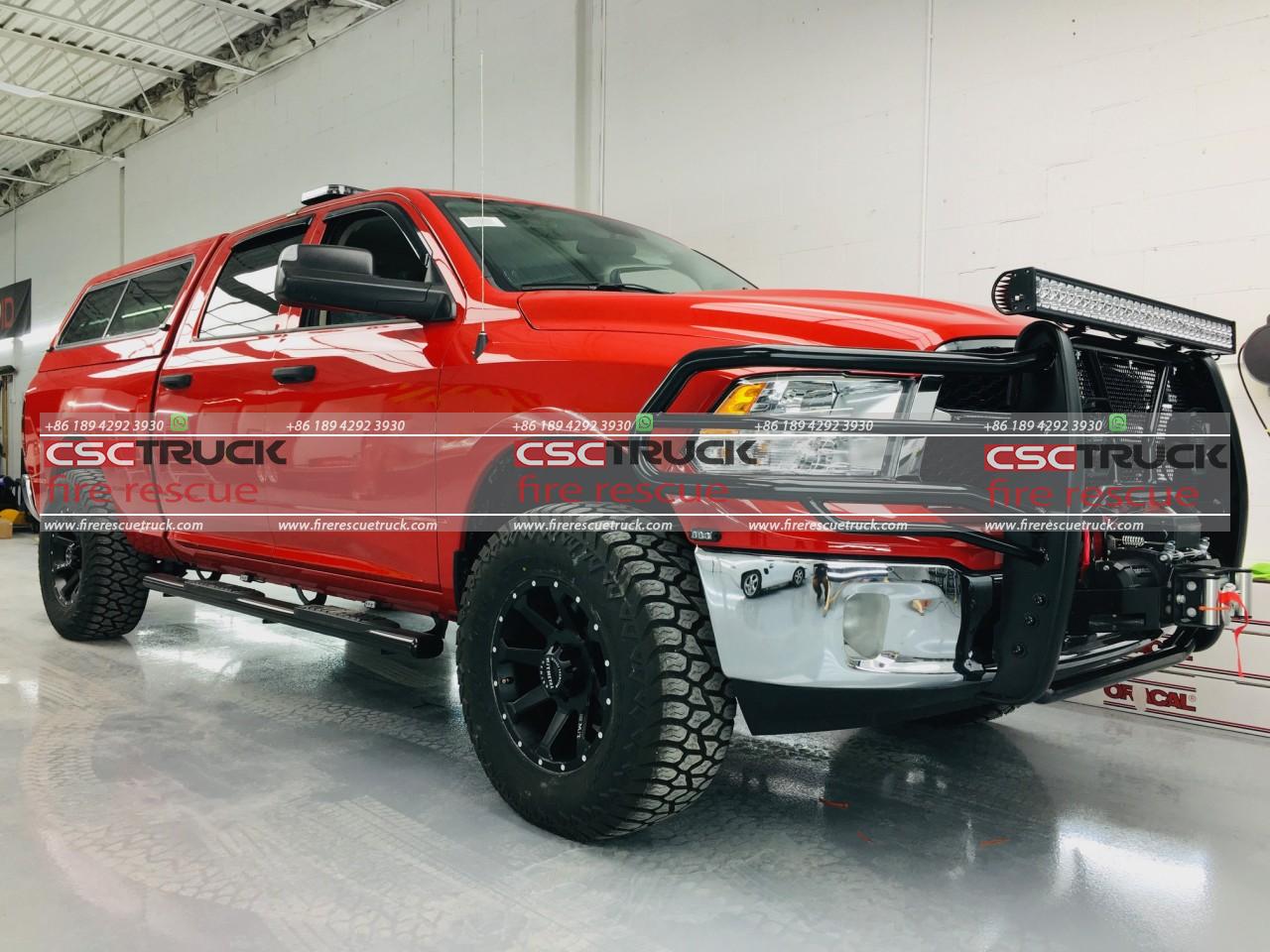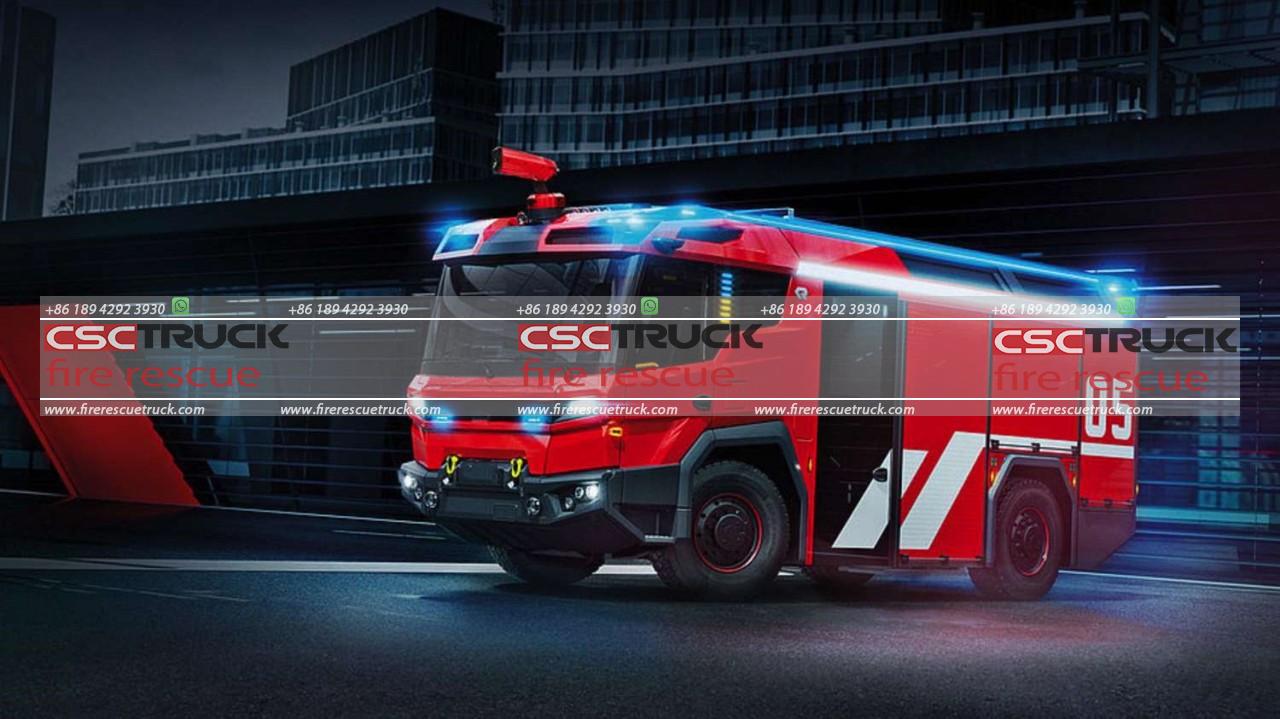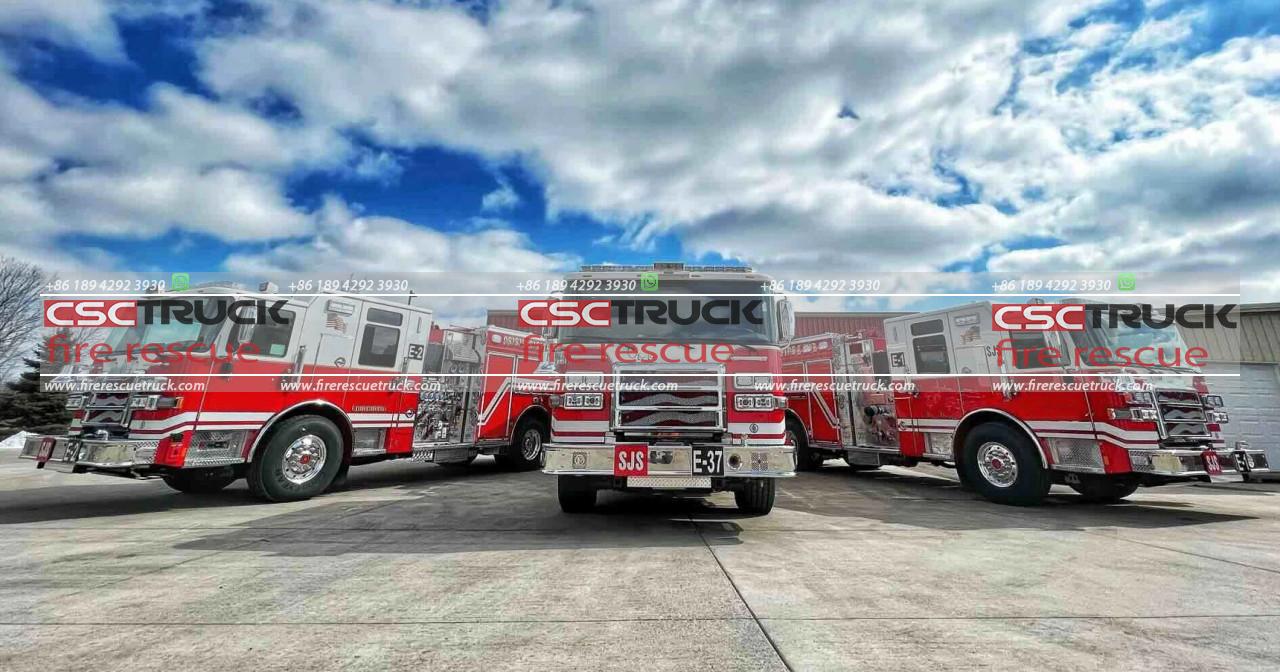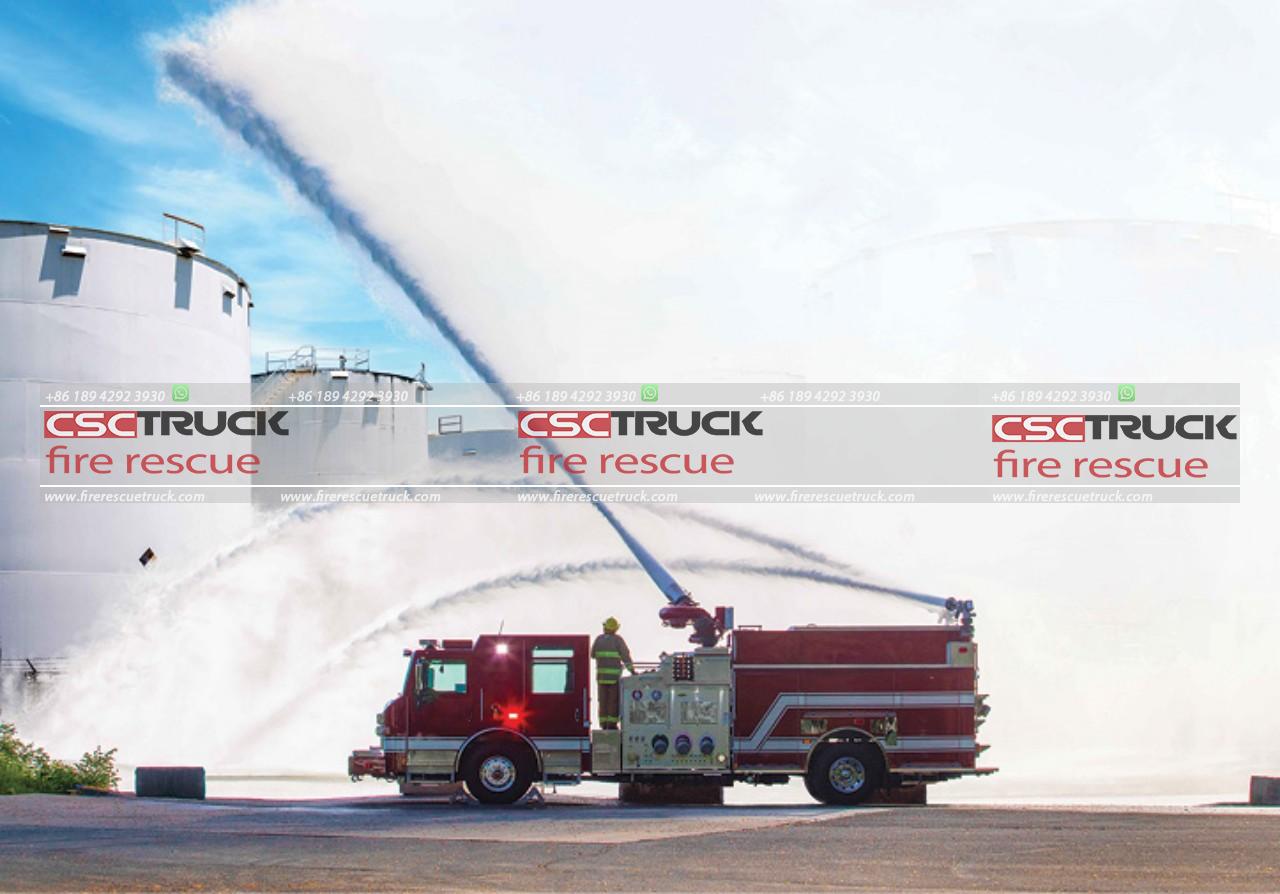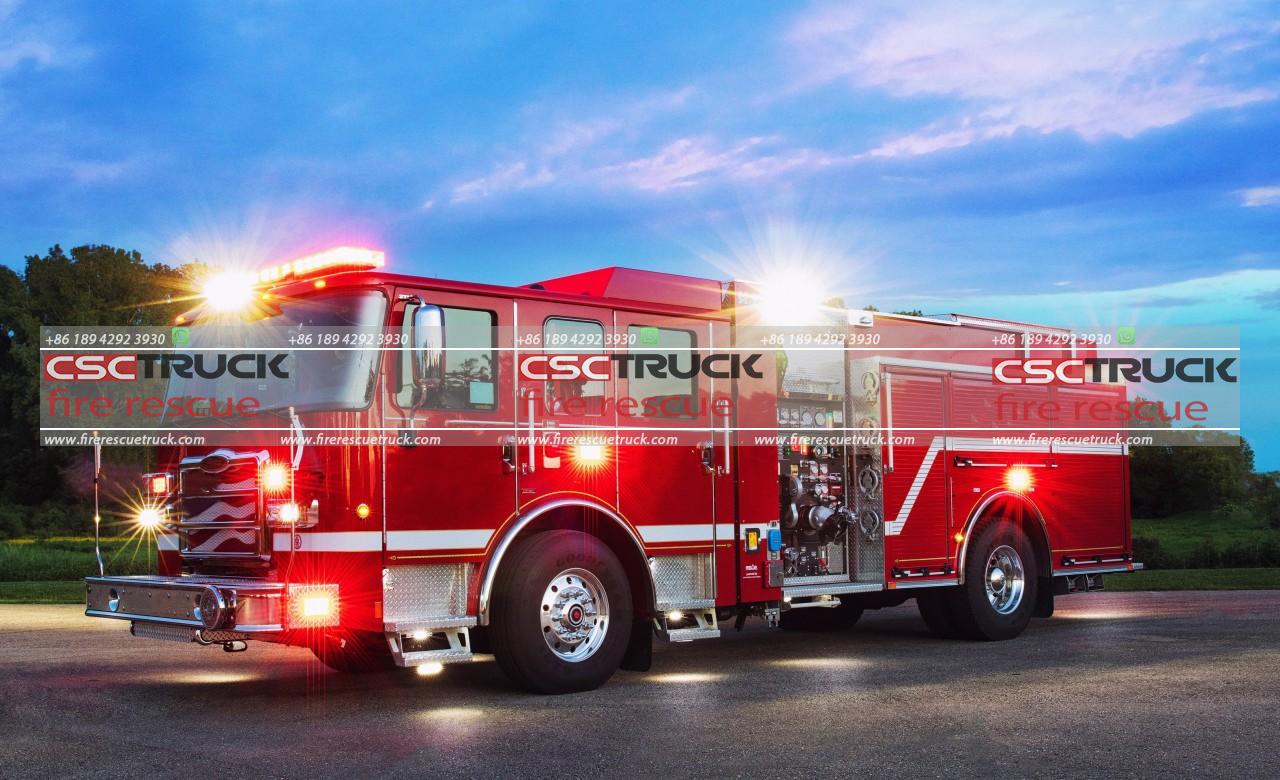Introduction
Chemical fires and hazardous material incidents pose significant risks to human lives, property, and the environment. Firefighters and emergency responders play a crucial role in managing such incidents effectively. To combat these dangerous situations, specialized vehicles called chemical fire trucks are equipped with advanced safety measures and specialized equipment. In this article, we will explore the safety measures implemented in a chemical fire truck for hazardous material incidents, highlighting the key features and technologies that enhance the safety of the responders and enable them to handle these emergencies efficiently.
1. Protective Structural Design
Chemical fire trucks are designed with special consideration given to the structural integrity and protection of the crew inside. The body of these trucks is reinforced to withstand extreme conditions, including intense heat and chemical exposure. The materials used in their construction are fire-resistant and non-reactive to the hazardous substances they may encounter. Additionally, the cabin is equipped with reinforced windows, providing enhanced visibility while ensuring the safety of the crew.
2. Hazardous Material Containment and Isolation
Chemical fire trucks are equipped with various features to contain and isolate hazardous materials. One of the essential components is the cargo area or compartment, which is designed to prevent leaks and spills during transportation. It includes specialized containers and storage compartments that can accommodate different types of hazardous materials safely. These compartments are often lined with chemical-resistant materials and equipped with seals to prevent the spread of toxic substances.
3. Advanced Ventilation Systems
To safeguard the crew from toxic fumes and chemicals, chemical fire trucks are equipped with advanced ventilation systems. These systems use high-efficiency particulate air (HEPA) filters to remove hazardous particles from the air, ensuring that the internal cabin remains safe and breathable. Some vehicles also employ positive pressure systems, which maintain a higher pressure inside the cabin to prevent the intrusion of toxic fumes.
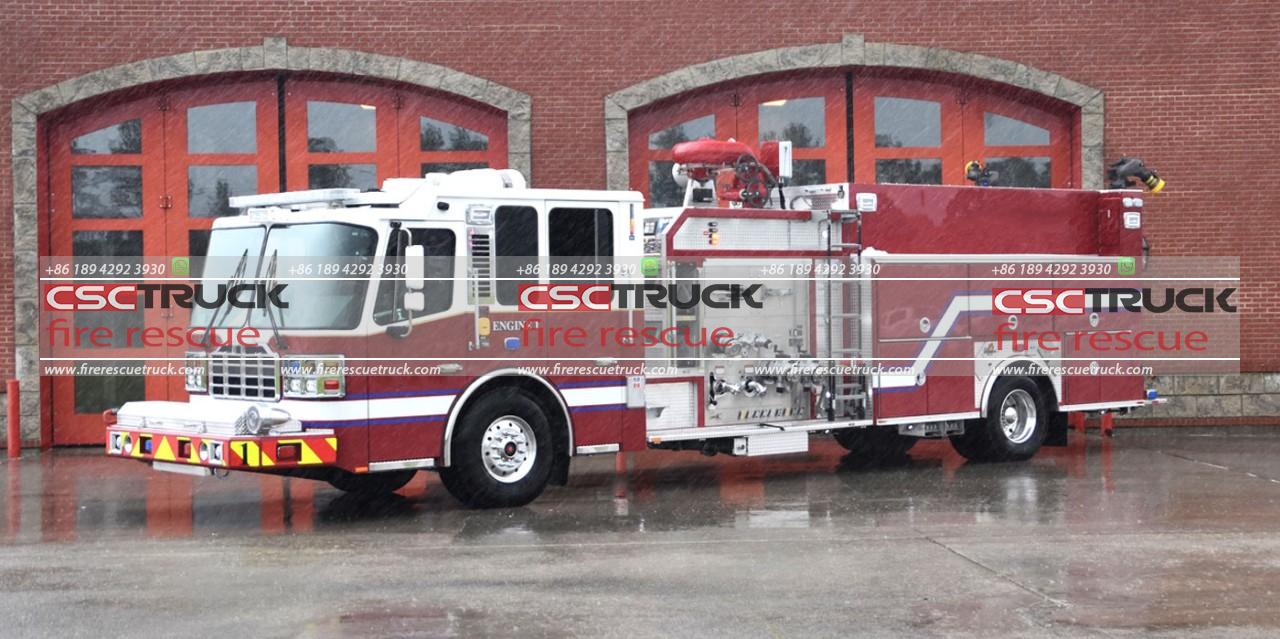
4. Chemical Detection and Monitoring Equipment
Detecting and monitoring hazardous chemicals is crucial in ensuring the safety of responders and the environment. Chemical fire trucks are equipped with sophisticated detection and monitoring equipment, including gas analyzers, radiation detectors, and chemical sensors. These devices enable the crew to identify and quantify the presence of hazardous substances accurately. Real-time monitoring helps responders make informed decisions and take appropriate actions to mitigate risks effectively.
5. Specialized Fire Suppression Systems
Fires involving hazardous materials require specialized fire suppression systems to combat the flames effectively. Chemical fire trucks are equipped with foam and dry chemical fire suppression systems specifically designed to handle such incidents. These systems can quickly extinguish chemical fires by suppressing the flames and preventing reignition. Additionally, these trucks carry large amounts of water for conventional firefighting purposes, ensuring a constant supply during emergencies.
6. Decontamination Facilities
After responding to hazardous material incidents, it is crucial to decontaminate the equipment, vehicles, and personnel involved to prevent the spread of hazardous substances. Chemical fire trucks often include decontamination facilities such as showers and equipment for thorough cleansing. These facilities enable responders to remove harmful chemicals from their bodies and equipment, reducing the risk of further contamination or health issues.
7. Communication and Data Systems
Effective communication is vital during hazardous material incidents to coordinate response efforts and gather crucial information. Chemical fire trucks are equipped with advanced communication systems, including 2-way radios, satellite phones, and computer terminals. These systems allow responders to communicate with each other, coordinate with other emergency services, and access real-time data such as chemical databases, safety protocols, and incident management resources.
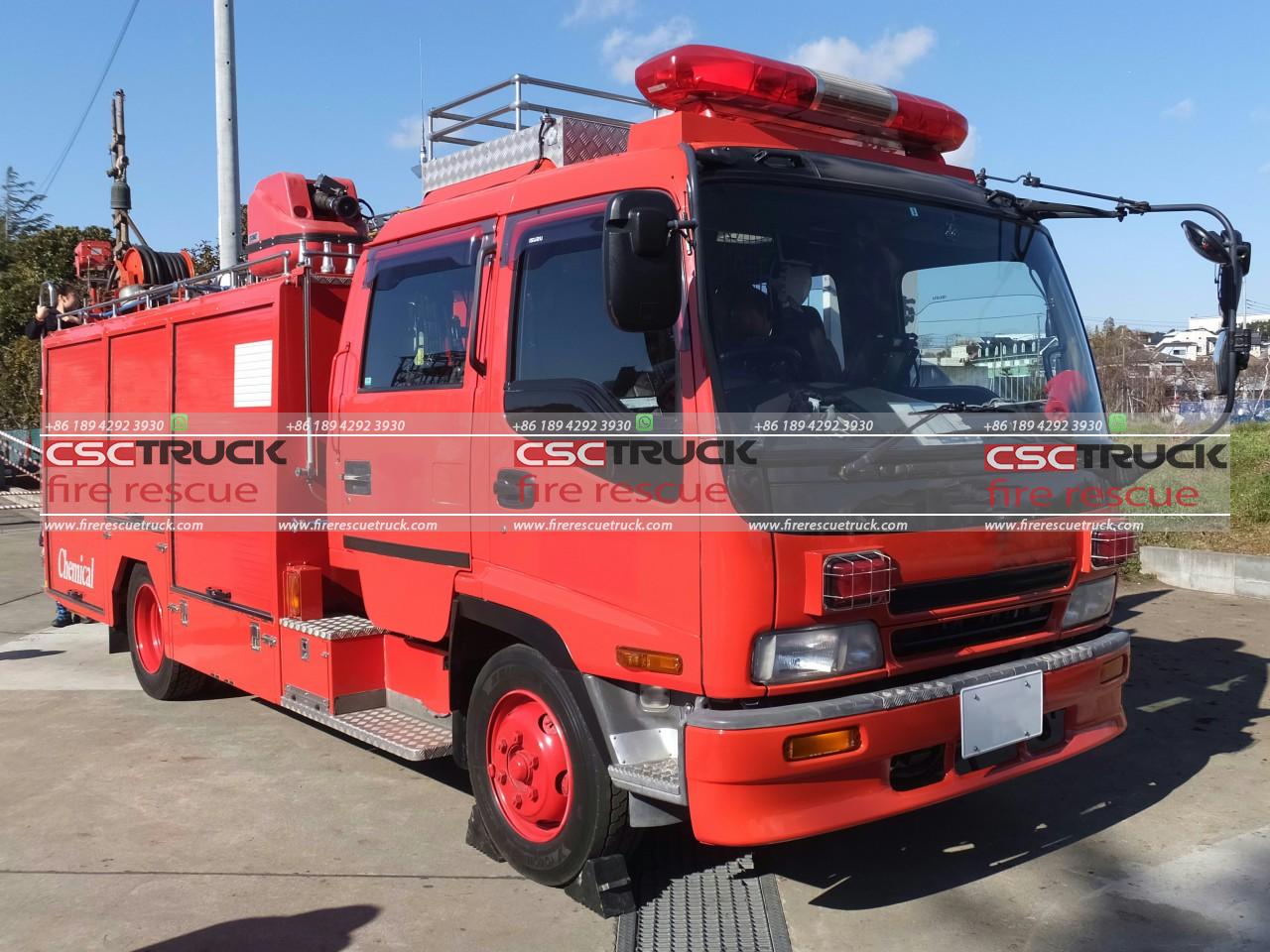
Conclusion
Chemical fire trucks are specialized vehicles designed to respond to hazardous material incidents with utmost safety and efficiency. They are equipped with various safety measures and advanced technologies to protect responders, mitigate risks, and handle these emergencies effectively. From protective structural design to specialized fire suppression systems, chemical detection, and decontamination facilities, these trucks are well-equipped to tackle the challenges posed by chemical fires and hazardous material incidents.
The protective structural design of chemical fire trucks ensures the safety of the crew inside the vehicle. The reinforced body and fire-resistant materials provide a shield against extreme conditions, including intense heat and chemical exposure. The reinforced windows offer visibility while protecting the crew from external hazards. This structural integrity is essential for the safety and well-being of the responders during hazardous material incidents.
Hazardous material containment and isolation are critical aspects of chemical fire trucks. The cargo area or compartment is specially designed to prevent leaks and spills during transportation. It includes specialized containers and storage compartments that can accommodate different types of hazardous materials safely. These compartments are lined with chemical-resistant materials and equipped with seals to contain and isolate the substances, preventing their spread and minimizing the risks associated with the chemicals.
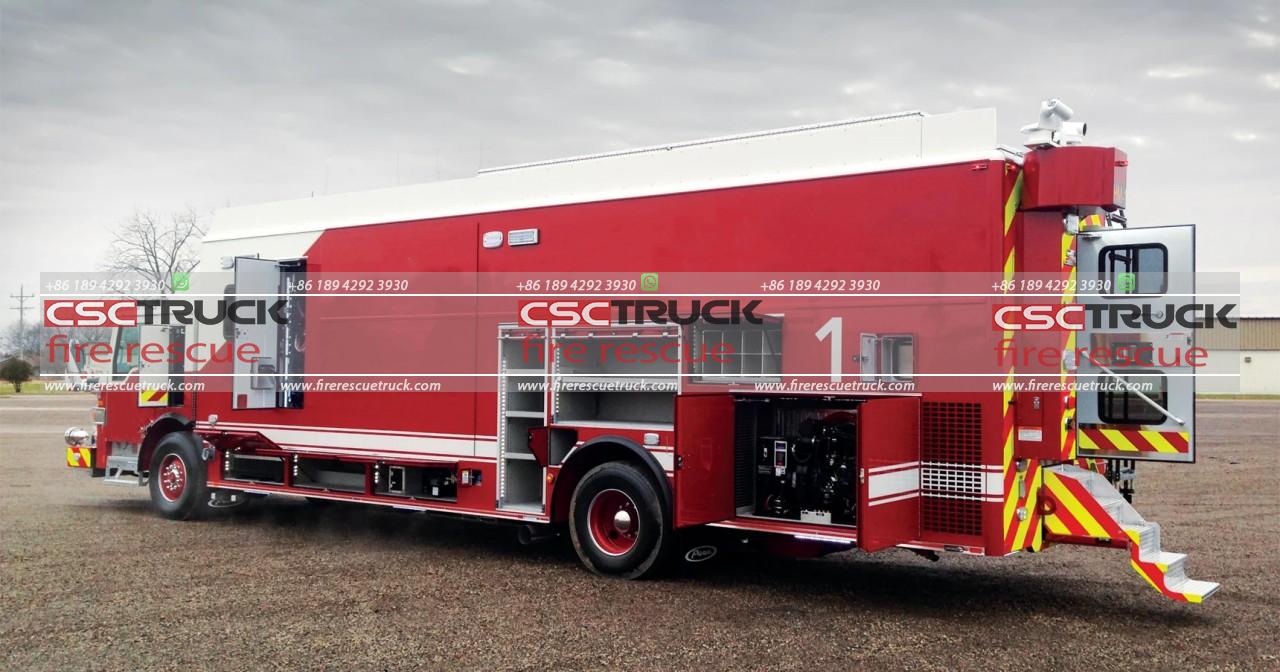
The advanced ventilation systems in chemical fire trucks play a crucial role in protecting the crew from toxic fumes and chemicals. These systems employ HEPA filters to remove hazardous particles from the air, ensuring that the cabin remains safe and breathable. Positive pressure systems are also used to maintain a higher pressure inside the cabin, preventing the intrusion of toxic fumes from the outside environment. These ventilation systems create a safe working environment for the responders, minimizing their exposure to harmful substances.
Chemical detection and monitoring equipment are vital components of chemical fire trucks. Gas analyzers, radiation detectors, and chemical sensors are used to detect and quantify the presence of hazardous substances accurately. Real-time monitoring enables responders to make informed decisions and take appropriate actions to mitigate risks effectively. These detection and monitoring systems enhance the safety of the crew by providing valuable information about the nature and concentration of the chemicals involved in the incident.
Specialized fire suppression systems are essential in combating chemical fires. Chemical fire trucks are equipped with foam and dry chemical fire suppression systems specifically designed to handle such incidents. These systems are highly effective in suppressing the flames and preventing reignition. Additionally, chemical fire trucks carry a significant amount of water for conventional firefighting purposes, ensuring a constant supply during emergencies.
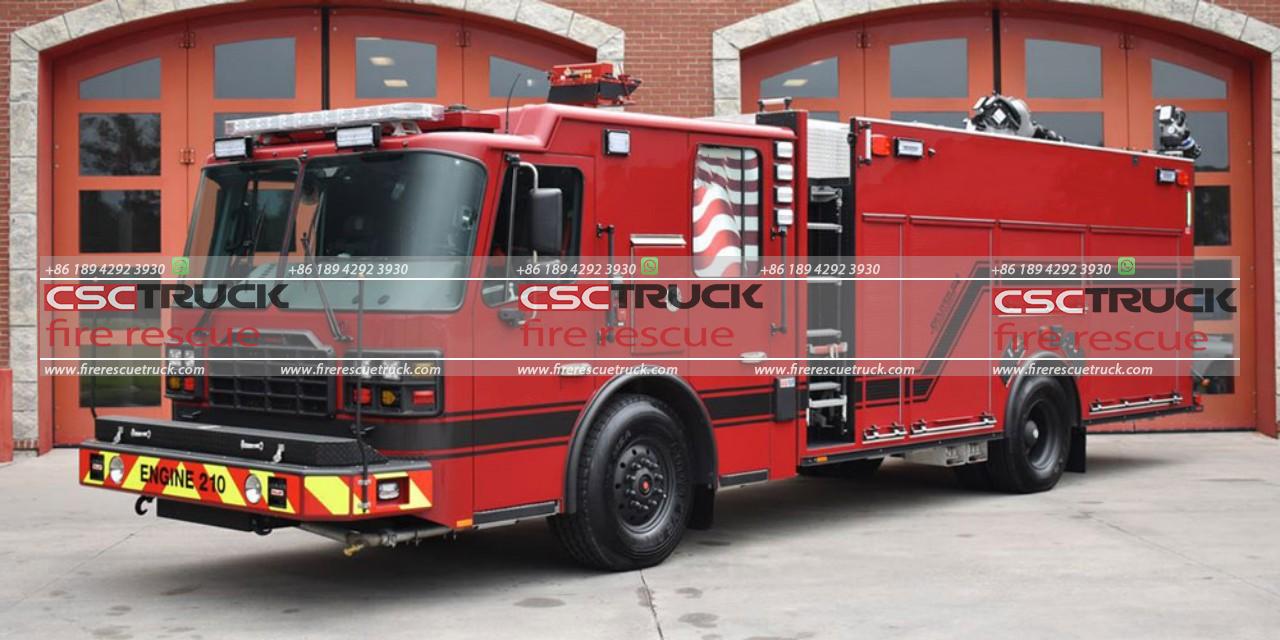
Decontamination facilities are crucial for the safety of responders and for preventing the spread of hazardous substances. Chemical fire trucks are equipped with showers and equipment for thorough cleansing. Responders can decontaminate themselves and their equipment after responding to hazardous material incidents, reducing the risk of further contamination or health issues. Proper decontamination procedures are followed to ensure the safety of the crew and prevent the spread of hazardous materials to other areas.
Communication and data systems are vital for effective coordination and information exchange during hazardous material incidents. Chemical fire trucks are equipped with advanced communication systems such as 2-way radios, satellite phones, and computer terminals. These systems enable responders to communicate with each other, coordinate with other emergency services, and access real-time data such as chemical databases, safety protocols, and incident management resources. Effective communication ensures a synchronized response effort and enhances the overall safety and efficiency of the operation.
In conclusion, chemical fire trucks are equipped with a range of safety measures and advanced technologies to ensure the safety of responders and enable them to handle hazardous material incidents effectively. From protective structural design to specialized fire suppression systems, ventilation systems, chemical detection equipment, decontamination facilities, and communication systems, these trucks are designed to provide a safe and efficient response to chemical fires and hazardous material incidents. These safety measures are crucial in protecting the lives of responders, minimizing the risks associated with hazardous substances, and mitigating the impact of such incidents on the environment and surrounding communities.
